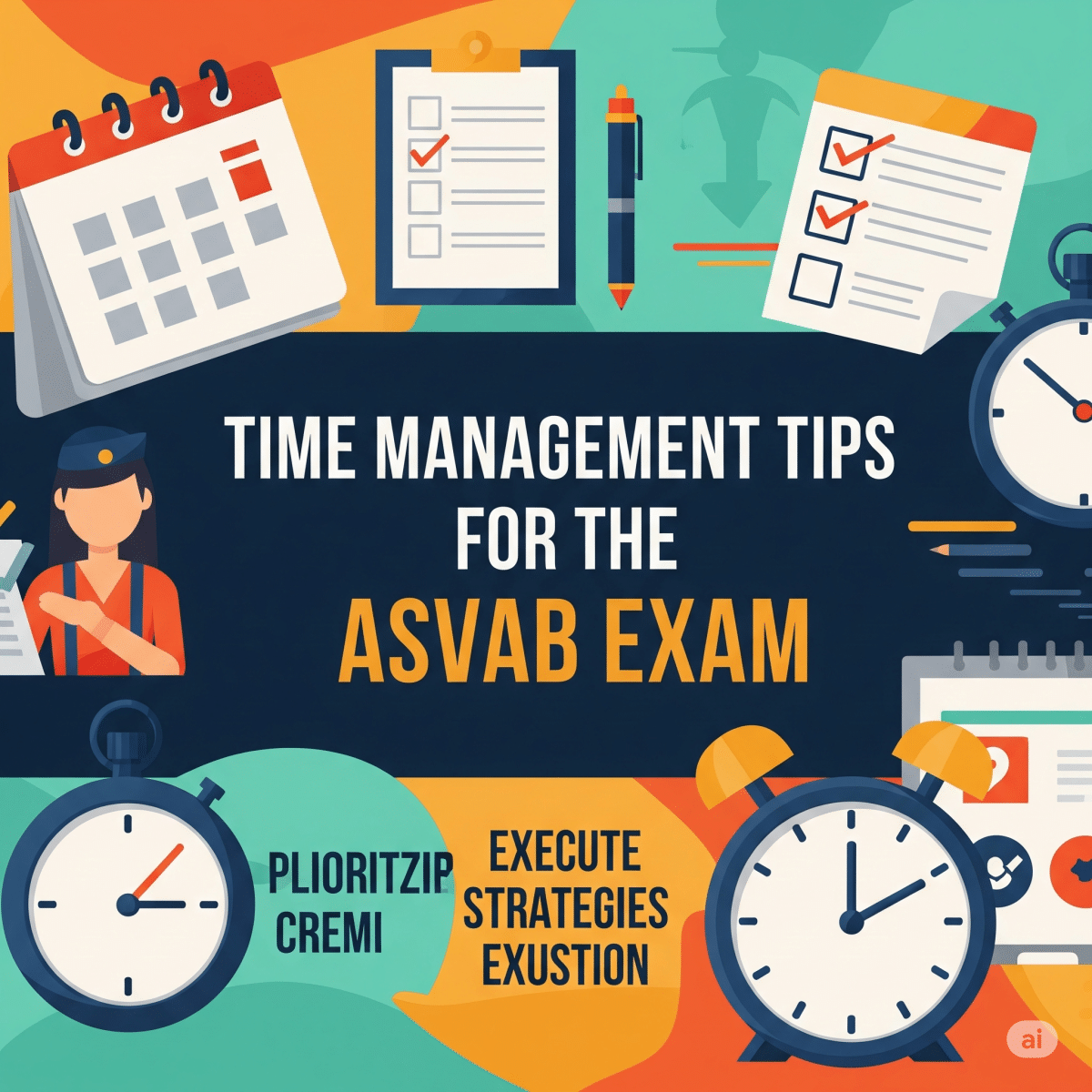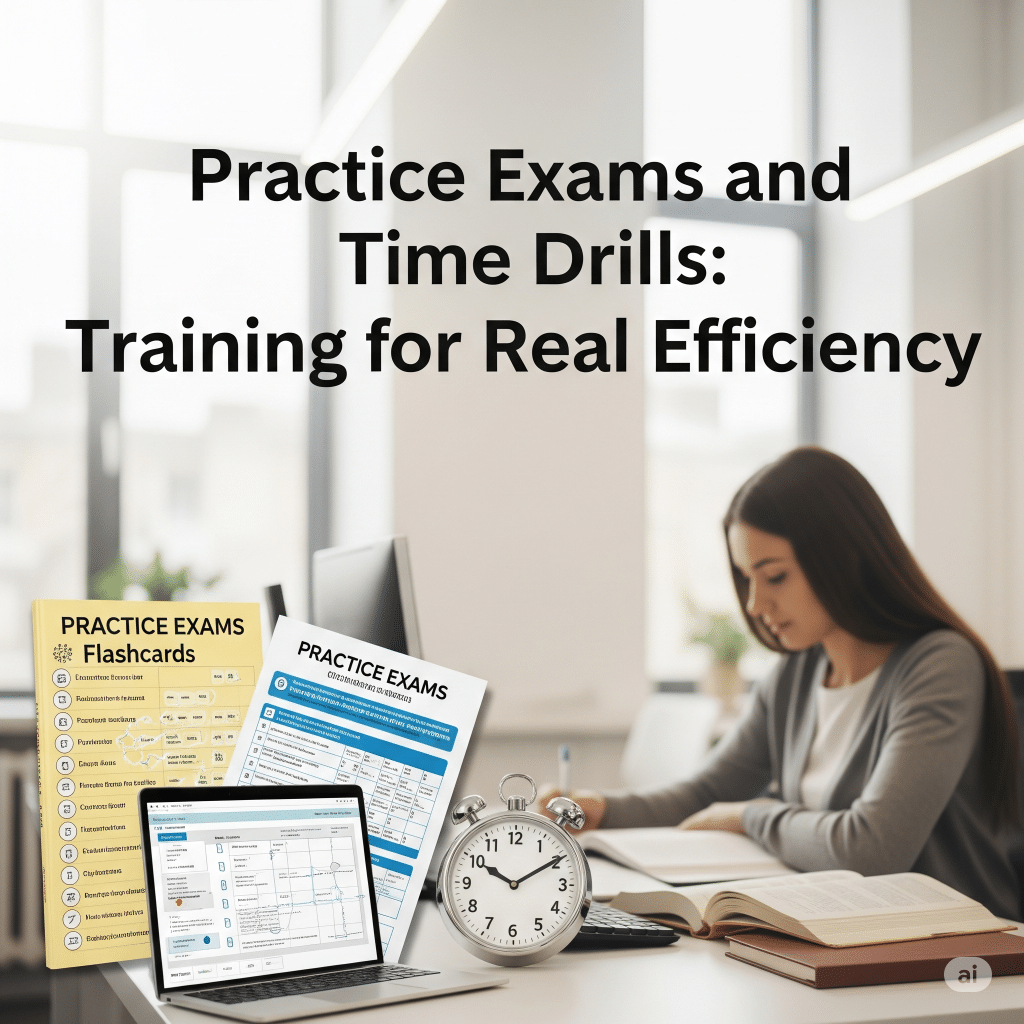Preparing for the ASVAB (Armed Services Vocational Aptitude Battery) can feel overwhelming—especially if you’re juggling school, work, or family life. With so many different subjects to study and a lot riding on your final score, it’s easy to wonder: Where do I start? The answer lies in creating an effective ASVAB study schedule.
A structured plan takes the guesswork out of studying and helps you stay focused, motivated, and on track. Whether you’re starting from scratch or trying to boost a previous score, a personalized study schedule will help you use your time wisely and cover all the topics you need—without burning out. This guide will walk you through everything from setting goals and managing your daily routine to building a flexible, balanced schedule that fits your life.
Let’s dive into how you can take control of your study time—and set yourself up for ASVAB success.
Why You Need an ASVAB Study Schedule
If you’re serious about getting a good score on the ASVAB, you need more than just good intentions—you need a plan. A well-structured ASVAB study schedule helps you manage your time, stay focused, and reduce stress. Without one, it’s easy to waste time, jump between subjects randomly, or burn out right before the test.
Creating a study schedule doesn’t mean you need to spend every waking moment with your nose in a book. Instead, it’s about consistency, balance, and direction. The ASVAB tests a wide range of skills—from math and science to word knowledge and mechanical comprehension. You’ll need time to brush up on each area and sharpen your test-taking skills.
Key Benefits of a Study Schedule:
- Provides structure: Know what to study and when.
- Boosts motivation: Small daily goals are easier to achieve than one big last-minute cram.
- Reduces test anxiety: The more prepared you are, the more confident you’ll feel.
- Prevents burnout: You can plan in breaks and keep your energy steady.
Signs You Need a Better Study Plan:
- You’re missing study sessions or “winging it.”
- You don’t know which subject to focus on each day.
- You’re running out of time before test day and panicking.
- You feel overwhelmed and unsure how to start.
When you have a study schedule, every day has a purpose. Whether you’re just beginning your ASVAB prep or you’re looking to improve a previous score, mapping out your plan is the first step toward success.
Assessing Your Timeframe and Daily Availability
Before you build your ASVAB study schedule, you need to figure out how much time you really have. Your personal timeline depends on your test date, current commitments, and starting skill level. Some people may have a few months to prepare, while others might only have a few weeks.
The good news is: no matter how busy you are, there’s a way to fit ASVAB study into your life. You just need to be realistic and intentional.
Step 1: Know Your Deadline
- How far out is your test date? Ideally, give yourself 6–8 weeks.
- If you haven’t scheduled it yet, use your study time to guide when you should book it.
Step 2: Audit Your Weekly Schedule
Take a look at your typical week. What time do you actually have available?
- Work schedule
- School classes
- Family or childcare responsibilities
- Other commitments (gym, appointments, etc.)
Now identify open time slots. Even 30 minutes a day can add up over time if used consistently.
Step 3: Decide on Study Blocks
You don’t need to study for hours on end. In fact, shorter, focused sessions tend to be more effective.
- 30–45 minutes per session is ideal for focus and retention.
- 1–2 sessions per day is realistic for most learners.
- Add longer weekend sessions if you’re short on time during the week.
Daily Study Example:
Time | Task |
7:00 AM | Review 10 vocabulary flashcards |
7:30 PM | Practice 5 math problems + review yesterday’s mistakes |
The point is to create daily study habits that work with your life—not against it.
Setting SMART Goals for ASVAB Prep
Once you know how much time you can study, it’s time to set goals. But not just any goals—SMART goals: Specific, Measurable, Achievable, Relevant, and Time-bound. This method gives your study plan direction and keeps you motivated.
What Are SMART Goals?
- Specific: Focus on a clear objective (e.g., “Learn 20 new vocabulary words” instead of “Study vocab”).
- Measurable: Track progress (e.g., quiz scores, number of practice questions done).
- Achievable: Keep it realistic (e.g., don’t try to cover 3 subjects in one hour).
- Relevant: Focus on what matters for your ASVAB goals (e.g., if your Arithmetic Reasoning score is weak, spend more time on math).
- Time-bound: Set deadlines (e.g., “Finish mechanical comprehension review by Sunday”).
Sample SMART Goals:
- “Complete one full-length practice test by the end of Week 2.”
- “Improve my Word Knowledge section score from 65% to 80% in 3 weeks.”
- “Study for 45 minutes each night, Monday through Friday.”
Tracking Your Goals:
Use a notebook, Google Sheet, or an app to track your progress. Write down:
- Daily goals and checkboxes
- Test scores and improvement areas
- Topics covered
- Time spent studying
Weekly Self-Check Questions:
- Did I hit my study time goal this week?
- What subjects do I still feel weak in?
- What worked well, and what needs to change?
Having a schedule is great, but goals keep it alive. They give you purpose beyond just “putting in time.” This keeps you energized, focused, and less likely to procrastinate.
Structuring Your Weekly Study Plan for Balance and Focus
Now that you’ve set your goals and know your schedule, let’s talk about how to build your actual study plan. A good ASVAB study schedule is balanced, meaning it covers all the test areas, and focused, meaning it targets your personal weak spots.
ASVAB Test Areas to Cover:
- Arithmetic Reasoning
- Word Knowledge
- Paragraph Comprehension
- Mathematics Knowledge
- General Science
- Electronics Information
- Mechanical Comprehension
- Assembling Objects
- Auto & Shop Information
Most people struggle with math, vocabulary, and mechanics—so be honest about where you need more time.
Weekly Study Plan Framework:
Day | Focus Area | Time | Notes |
Monday | Arithmetic Reasoning | 45 mins | Review concepts + practice questions |
Tuesday | Word Knowledge + Flashcards | 30 mins | Learn 15 new words |
Wednesday | Paragraph Comprehension | 45 mins | Timed reading drills |
Thursday | Math Knowledge | 45 mins | Target weak math topics |
Friday | Mechanical/Science | 30 mins | Light review |
Saturday | Practice Test | 90–120 mins | Full or partial timed test |
Sunday | Review + Rest | 30 mins | Go over mistakes, take notes |
Study Planning Tips:
- Rotate topics: Don’t study the same subject 3 days in a row.
- Use themes: Mondays = math, Tuesdays = vocab, etc.
- Add variety: Mix practice questions, video lessons, flashcards, and review sessions.
Must-Have Resources:
- ASVAB prep books (Kaplan, Barron’s, etc.)
- Flashcard apps (Quizlet)
- Online practice tests and tutorials
- YouTube or websites like Andy’s ASVAB Class
Stay flexible, but stick to your plan as much as possible. Life happens, but consistency beats perfection every time.
Staying Consistent and Adjusting as You Go
Creating an ASVAB study schedule is just the beginning. The real key to success? Consistency. You don’t need to be perfect every day—you just need to keep showing up. Small, steady progress beats sporadic cramming every time.
How to Stay Consistent:
- Make it a habit:
Study at the same time each day, just like brushing your teeth. - Use a calendar or planner:
Physically check off each session—it feels rewarding and helps track your commitment. - Tell someone your plan:
Share it with a friend, tutor, or family member for accountability. - Set reminders:
Use phone alarms or apps to remind you it’s study time. - Celebrate small wins:
Did you finish all your study goals this week? Treat yourself to something small.
How to Adjust Your Schedule:
No schedule is perfect from day one. Life can get busy, and your progress may not be exactly what you expected. The key is to adjust—don’t quit.
- Falling behind? Scale back the number of topics per week, but stay consistent.
- Not improving? Shift focus to your weakest sections or try different study methods.
- Overwhelmed? Add rest days, shorter sessions, or easier review tasks.
Monthly Review Checklist:
- Have I improved in at least one subject area?
- Am I meeting most of my weekly goals?
- Are my practice test scores going up?
- Is my study schedule still realistic?
Remember, your study plan should grow with you. Keep fine-tuning it to fit your pace, goals, and lifestyle.
Final Thoughts: A Smart ASVAB Study Schedule Leads to Real Results
Success on the ASVAB isn’t about being the smartest person in the room—it’s about being the most prepared. With a clear ASVAB study schedule, even a few weeks of consistent work can make a huge difference in your test performance.
Here’s a quick recap of what you need to do:
✅ Understand your test date and time availability
✅ Set SMART goals that are personal and realistic
✅ Build a weekly plan that covers all subject areas
✅ Track your progress and adapt when needed
✅ Stay consistent—and don’t forget to take breaks
Whether you’re aiming for a specific job in the military or just want to boost your overall score, a personalized study schedule will help you get there.




